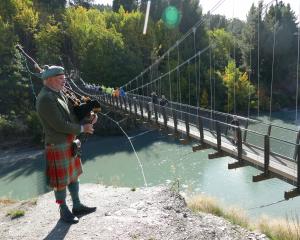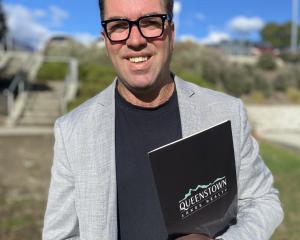A spring planting programme is planned for the largest island in Lake Wakatipu as part of a long-term bid by conservationists to create a safe haven for threatened native species.
The Wakatipu Islands Reforestation Trust is organising an indigenous tree-planting effort with the Wakatipu Tramping Club on Pigeon Island on September 19 and 20.
The trust is inviting the community to participate that weekend, as well as on the annual public day, October 3, and during the volunteer week from October 5 to 9.
The trust was founded in 1999 and Neill Simpson, Hans Arnestedt, John R.
Wilson and Richard Struthers are the trustees.
Their aim is to restore the ecology of the 170ha Pigeon Island (Wawahi-Waka) and 110ha Pig Island (Matau Island) to their natural state, without introduced predators, and reintroduce native bird, animal and insect species that are at risk on the mainland.
The spring programme includes planting another 2000 native beech, broadleaf and kohuhu trees on Pigeon Island.
Hut maintenance and track work are among the tasks ahead for volunteers.
Mr Struthers, who is the Department of Conservation (Doc) Wakatipu area office capital works project manager, said there had been a huge amount of public support for planting days over the years.
The Queenstown Lakes District Council (QLDC) and various funding agencies, including the the Central Lakes Trust and Project Crimson, have given financial backing, and Dart River Jet Safaris and Coastguard Queenstown have assisted with transport to the islands.
"The islands have huge ecological significance and potential as wildlife sanctuaries, and the trust intends developing this potential in conjunction with the QLDC, Doc and the public.
"Problems include fire risk and there have been two disastrous fires in the last 15 years - both were started on the beach - which have set the forest regeneration back about that length of time.
There's a permanent fire ban out there."
Bell bats, tuis, silvereyes, grey warblers, brown creepers, wood pigeons, parakeets and yellowheads are some of the native bird species that are thriving in the island habitats.
Mr Simpson said the islands may be suitable for kiwis at some stage, "depending on the findings of an ecological study, which could be put to an Otago University student".
"It's a good area for birds because of the vegetation and there's no predators.
We want to help nature along."
Doc Wanaka rangers translocated buff weka birds from the Chatham Islands to Stevensons Island (Te Peka Karara), an uninhabited 65ha reserve on Lake Wanaka, in 2003.
A total of 60 juveniles of the sub-species, which was once abundant in drier inland regions to the east of the South Island, were translocated to Pigeon and Pig Islands in 2005 and 2006.
Doc Wanaka biodiversity programme manager Stu Thorne said casual observations indicated the rare birds seemed to be thriving.
"Occasionally, the birds swim to the mainland and don't tend to survive too long because of predation by stoats, wild cats, rats and ferrets. The success of the programme depends on keeping the whole habitat predator-free."












